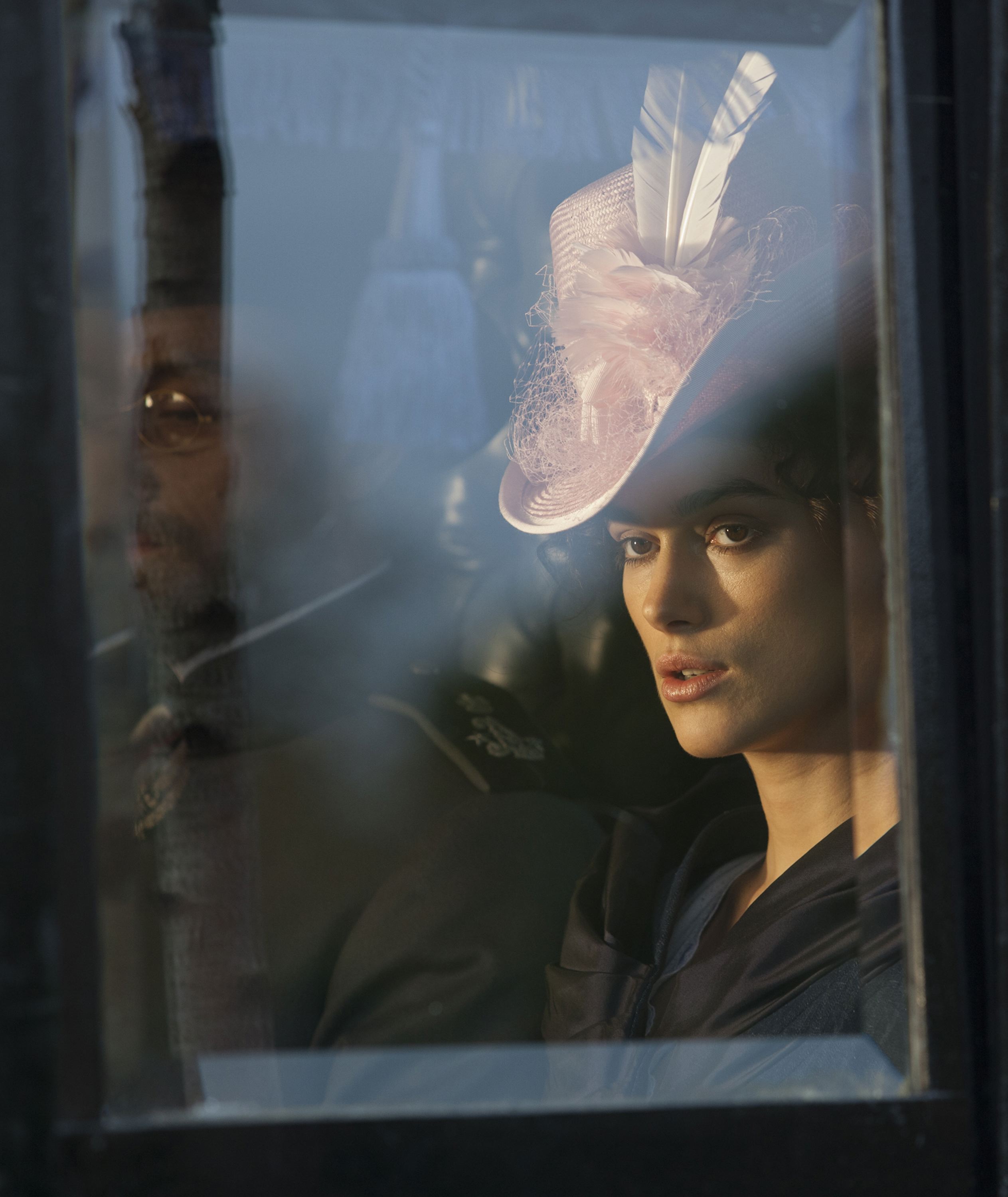Including glimpses of Sleeping Beauty in her glass coffin, the rings of Saturn, and a roadside Texas barbecue, Terrence Malick’s The Tree of Life bears a variety of forms—and invites as many reactions. Watching it, you may feel amazed or muddled, softly spoken to or simply abandoned; in any case, you shouldn’t wait for the DVD. Better than a masterpiece—whatever that is—The Tree of Life is an eruption of a movie, something to live with, think, and talk about afterward.
The film begins with the O’Briens (Brad Pitt and Jessica Chastain) receiving news of their teenaged son’s death, their grief echoing through perplexing shot sequences and sparse dialogue. It’s enough to confirm the scuttlebutt that The Tree of Life will be the most unorthodox Hollywood drama in many moons—and then the film’s perspective switches to Hubble for a vision of the birth of the universe. From a nebulous In the Beginning . . . to the first articulations of life on Earth and the reign and extinction of the dinosaurs, this silent, self-contained sequence was conceived in collaboration with pre-CGI-effects legend Douglas Trumbull, fresh out of retirement. The image of a beached plesiosaur craning its neck to contemplate the fatal wound raked across its side lingers on, symbol of a wounding and disorienting work. It’s the big-budget experimental film George Lucas never had the stones to make.
Snap forward to the 1950s, the middle-class suburbs of Waco, and the O’Brien family in an earlier, happier moment. Jack (Hunter McCracken), the eldest of three preadolescent brothers, emerges as the axis of the film, the process of his education and acculturation to the edge of puberty documented in a headlong style that lifts sometimes to singing montage. (Usually the crediting of five editors would be reason to panic; Malick’s film has very little truck with what’s usual.)
Scenes occur as if bobbing on the surface of a family’s collective consciousness. We’re transported intermittently to a future where the boy Jack has grown up into a crabby Sean Penn, daydreaming from a glass rectangle in downtown Houston, a contemporary America to make Thomas Jefferson pack it in. In large part, the film can be read as occurring in the mind of adult Jack returning to his birthright of memories: the indivisible combination of Mom, Dad, God, and backyard.
Chastain’s mother is transparent with virtue, the idealized homefront sweetheart dreamed in Malick’s The Thin Red Line but now stretched gauzy over a feature’s length. A less worshipfully written part gives Pitt more to do. Though more fondling and affectionate than our revised image of the flat-top Eisenhower-era patriarch, Mr. O’Brien badgers his sons with lessons in Looking Out for #1 and backyard boxing. Venting a bellyful of frustrated ambition, he talks covetously about the folks on the hill, brags about his worthless patents, and finds an outlet for unrealized musical aspirations by playing the church organ. This provides some of the classical music that fills The Tree of Life, much of it liturgical, fitting Jack’s growing, paralleled disillusion with his father and the Father—”Why should I be good if you aren’t?” he’s asking both.
Though markedly faithful to Darwin, Malick’s film begins with a quotation from the Book of Job, imagines heaven, and features Mother pointing to the sky to deliver the lesson: “God lives there.” Like anything ambitious, The Tree of Life will be called “pretentious,” but its characters address the gauche subject of the eternal, naturally, through the Judeo-Christian lingua franca instead of via a vague, enervated “spirituality.” In this, it is quite direct and accessible.
With his cosmic realism, Malick vividly remembers youth’s intimate yet huge idea of God, and Tree‘s Genesis overture recalls the viewer to a child’s awed first conception of the vastness beyond his circumscribed world. Thus prepared, you have fresh eyes to see suburbia as, yes, a miracle. Throughout Tree, the close touch of director of photography Emmanuel Lubezki’s Steadicam brings forgotten childhood rites near: roughhousing, betrayals of confidence, the clandestine thrill of being alone in a strange house, a child’s frank curiosity toward the diversity of off-limits human types—including town drunks, cripples, and the black boys at that barbecue.
In his evocation of lost-Eden childhood, Malick shows the wisdom of C.S. Lewis’ An Experiment in Criticism: “If we are to use the words ‘childish’ and ‘infantile’ as terms of disapproval, we must make sure that they refer only to those characteristics of childhood which we become better and happier by outgrowing,” Lewis wrote. “Who in his sense would not keep, if he could, that tireless curiosity, that intensity of imagination, that facility of suspending disbelief, that unspoiled appetite, that readiness to wonder, to pity, and to admire?” It is because the 67-year-old director can get so much of that onscreen, and much more besides, that he’s one of the few American filmmakers operating on the multiplex scale who makes movies feel like undiscovered country.








